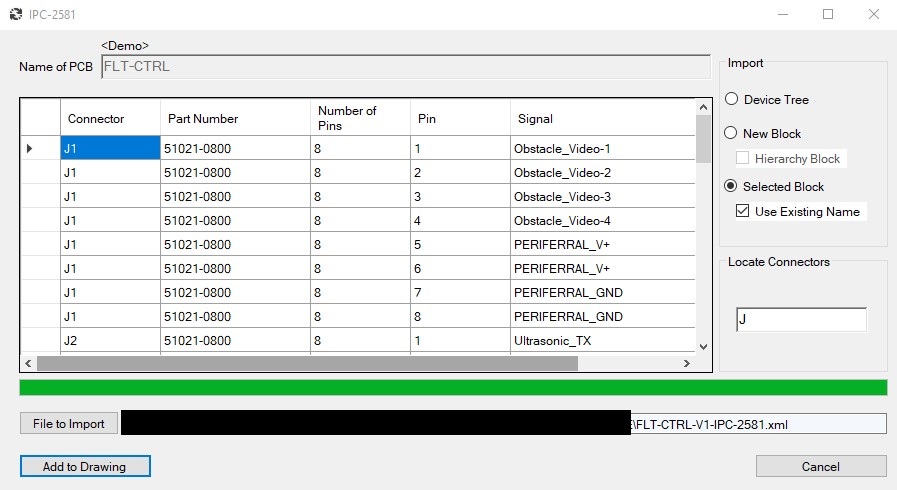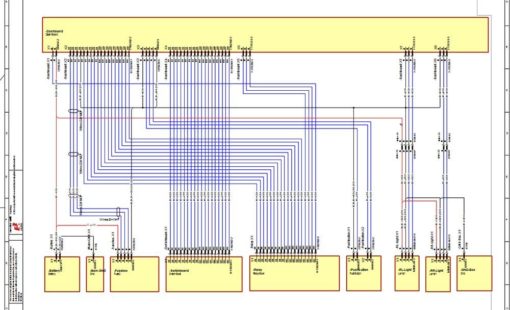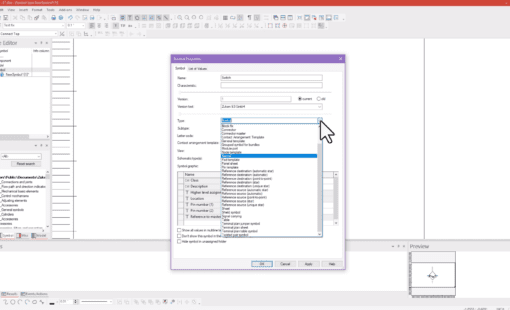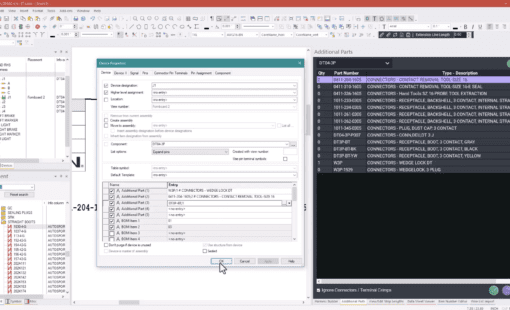Integrating PCB Designs using the IPC-2581 Importer to Accelerate Wire Harness Designs
Wire harness design is a crucial component that interconnects various electronic functionalities within a system. However, wire harness engineers often face significant challenges, including the absence of efficient data exchange methods, leading to prolonged design cycles, increased errors, and hindered collaboration. The IPC-2581 standard serves as a beacon of integration to bridge the gap between electronic and electrical engineers. By providing a cohesive and comprehensive data exchange format, it facilitates better integration. This post explores the potential of leveraging IPC-2581 export files within E3.series; a strategic move to modernize harness design by enhancing efficiency, accuracy, and interdepartmental synergy.
Understanding the Basics:
Before we jump into what the IPC-2581 Importer tool does, let’s start by reviewing the basics and why this tool is essential.
IPC-2581 Standard: Definition, Purpose, and Relevance
The IPC-2581 standard is a comprehensive data exchange format that simplifies communication between electronics design and manufacturing teams. It includes crucial information for printed circuit board (PCB) fabrication and assembly, enabling more efficient, error-free data transfer. Additionally, in the context of electronic and electrical engineering, IPC-2581 serves as a valuable bridge. For electrical engineers, particularly those involved in harness design, it provides essential details that integrate seamlessly into broader electrical systems.
E3.series: Overview and Significance in Harness Design
E3.series is a robust and versatile suite of software tools for designing and documenting electrical wiring, control systems, and harnesses. It offers a comprehensive approach to wire harness design, enabling engineers to create accurate and scalable wiring diagrams, harnesses, and cable assemblies. The software manages complexity and facilitates collaboration, ensuring that designs are manufacturable and compliant with industry standards. By leveraging E3.series, engineers can predict and solve potential issues early in the design phase. As a result, the risk of costly revisions is reduced, and the final product meets the required specifications and quality standards.
The Importance of Seamless Data Exchange
The exchange of data between electronic and electrical engineers is a critical aspect of the design process. Seamless data exchange ensures that all stakeholders are working from the same information, reducing the likelihood of errors, miscommunication, and inconsistencies in the final product. Electrical engineers can import IPC-2581 files into E3.series to automatically populate their harness designs. Therefore, they can include accurate information from electronic engineers, such as connector details and signal information. This level of integration speeds up the design process and enhances collaboration between different engineering disciplines, leading to more innovative, cohesive, and functional products. Furthermore, this integration improves the overall design quality.
Leveraging the IPC-2581 Importer in E3.series
Users can launch the IPC-2581 Importer tool either from within E3.series or externally. This tool extracts the I/O connection information from the PCB design, allowing users to select and import the relevant data into their E3.series project. Users can add connectors directly to the device tree, a new block, or an existing block in the project, representing the PCBs in the E3.series design.
Moreover, with this extracted detail, the harness engineer can easily define the harness connections to the board, taking advantage of the automatic transferring of signal logic and the E3.series intelligent parts database. E3.series automatic mating connector and pin terminal selections help boost design efficiency and eliminate errors when selecting the wrong parts.

Final Thoughts on the IPC-2581 Importer
Incorporating the IPC-2581 standard with E3.series marks a significant step forward in wire harness design. This innovative solution resolves the long-standing collaboration and data exchange issues among engineering teams. Furthermore, by utilizing the power of IPC-2581 export files, engineers can achieve greater efficiency, accuracy, and interdepartmental collaboration. This approach not only streamlines the design process but also enhances the overall quality of the final products. Lastly, as industries progress, adopting integrative tools like this will be essential in keeping up with the demands of complex electrical systems, ensuring that engineers remain at the forefront of innovation and design excellence.
To learn more about the IPC-2581 standard and what companies are using it today, visit the IPC-2581 Consortium web page.
Related Products and Resources

- Blog

- Products

- Products
E3.series is a Windows-based, scalable, easy-to-learn system for the design of wiring and control systems, hydraulics and pneumatics. The out-of-the-box solution includes schematic (for circuit and fluid diagrams), cable (for advanced electrical and fluid design), panel (for cabinet and panel layout), and formboard (for 1:1 wiring harness manufacturing drawings). Integrated with MCAD, E3.series is a complete design engineering solution from concept through physical realization and manufacturing output.





